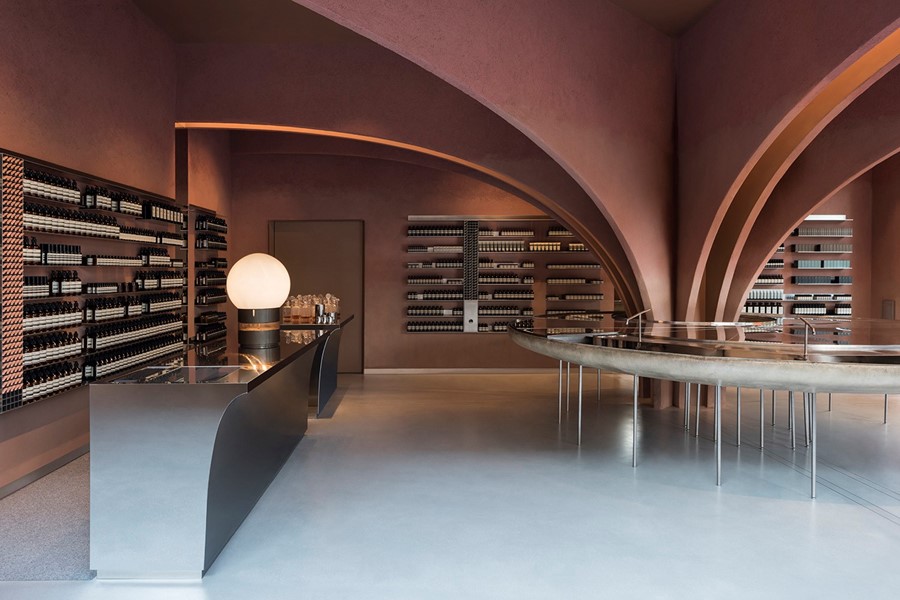Peter Girgis of Snøhetta, the architecture firm behind Aesop’s transformative stores, shares some trade secrets
“I remember the ceiling over every bathtub I’ve stretched out in,” wrote Sylvia Plath in The Bell Jar. “I remember the texture of the ceilings and the cracks and the colours and the damp spots and the light fixtures. I remember the tubs, too: the antique griffin-legged tubs, and the modern coffin-shaped tubs, and the fancy pink marble tubs overlooking indoor lily ponds, and I remember the shape and sizes of the water taps and the different sort of soap holders. I never feel so much myself as when I’m in a hot bath.”
Plath is not alone in her love of this most private of places. The bathroom is a site of total transformation, where the ritualistic soaking and slathering of face masks, lotions and essential oils can also permit profound personal healing. So how best to optimise your own bathroom’s power to become a sanctuary? Peter Girgis of Snøhetta, the architecture firm responsible for Aesop’s most achingly considered global retail spaces – including a recently opened store at Duke of York Square in London’s Chelsea – has some answers.
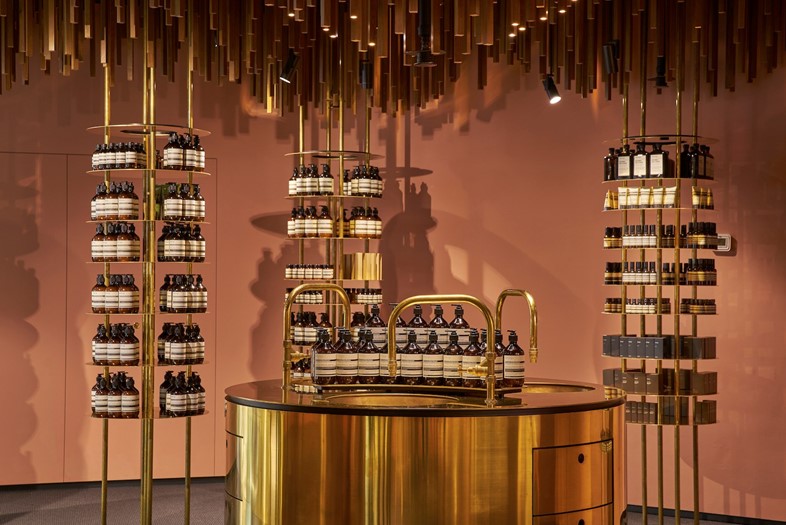
1. Consider natural – and simple – materials
For the new Aesop store in London’s Chelsea, Snøhetta used a natural material the same shade as the surrounding buildings’ terracotta brickwork. “Plaster is a hydroscopic material. It’s aligned with what the products of Aesop do; they cleanse you, make you feel good, make you feel soft, moisturised. Clay and plaster make you feel comfortable in a room,” says Girgis. As such, the space is centred around a sprawling clay archway, surrounded by an aluminium water table-cum-sink reflecting the rosy glow of the walls. “It’s also important to use singular materials,” he continues. “Not cluttering your thoughts or your concepts with other ideas or solutions will create a calm and balanced backdrop.”
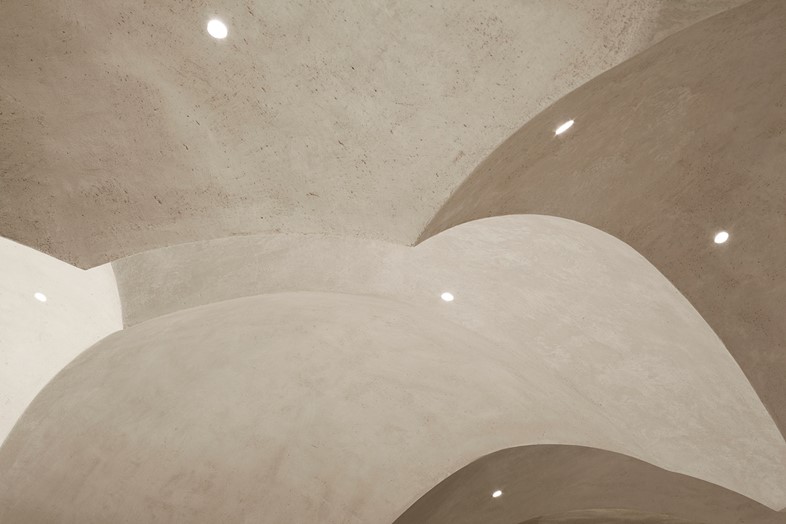
2. Reference spirituality with your sink
“You can take visual cues from architectural references when it comes to thinking about your own bathroom,” explains Girgis. “This could be from a church, from a spa, or maybe another type of atmosphere. But if you look at places of spirituality in particular, one of the elements you would try to replicate is making a space feel grand.” But grandeur doesn’t always equate to fussiness. “You can do this quite simply. It can be through materiality – the use of stone, repetition of a material, or striking geometry, for example. Also, the running water in our sinks is our first access point to cleanliness. So focusing on the sink, in particular, is a way of bringing the spiritual into our homes.”

3. Lighting is key
Snøhetta works closely with a company called Concept Design to formulate the lighting for Aesop’s stores, which is a key component to creating an ambient mood. “We have an idea of how we want to illuminate the space, and together we find a way of executing it,” says Girgis. “The lighting should take into consideration time; it should have an evening mode, and it should have a day mode. It should have a subtlety, an abstraction.” As such, Girgis highly recommends the use of dimmers. “These types of fixtures are critical,” he says. “You could never get it with a singular lamp in the centre of your living room. You would have to have a variety of lights that give you a sense of change. It should be the same for your bathroom.”
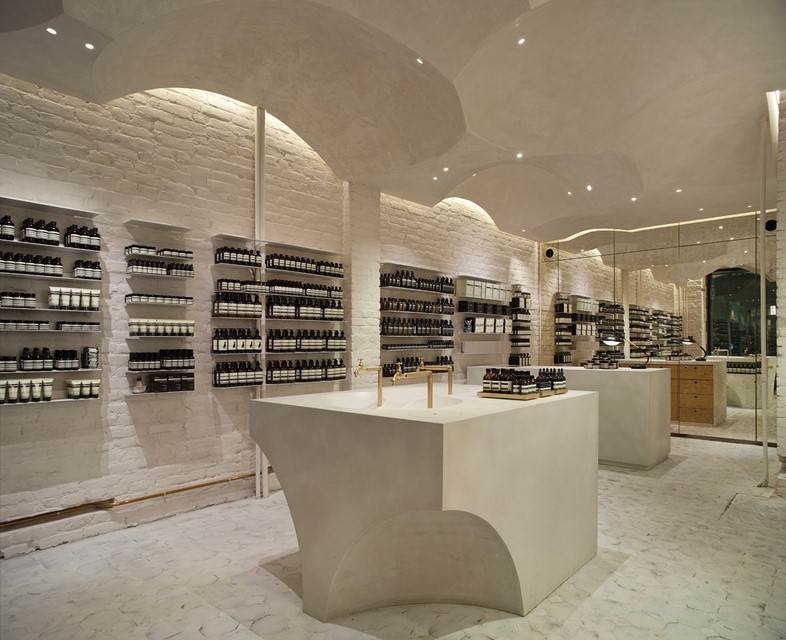
4. Experiment with scent
Not only are the plaster and clay which were used in the design of the new store naturally cleansing – they also have an entirely neutral scent. “Part of the new Aesop store is that the material on the walls allows your senses to have a clear quality, and not be distracted,” he says. Such neutrality allows for further scents to be brought into the room. “Oil burners filled with various different essential oils are ideal for a bathroom. They provide the room with a fine mist of scent.”
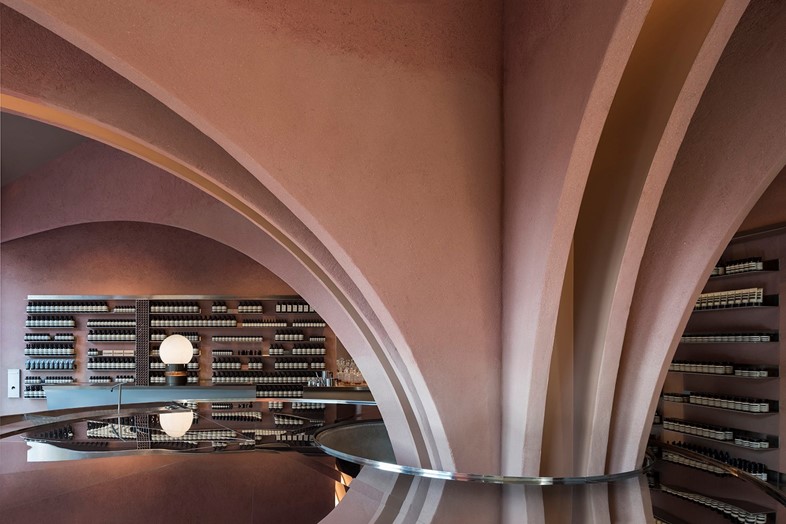
5. Look to unlikely places for design inspiration
“We were asked to look at some references you wouldn’t expect,” explains Girgis. “A Clockwork Orange, for example. A fashion film, too.” But he is quick to note that Snøhetta’s aim was to replicate an atmosphere, rather than create a pastiche. “It’s about emulating the feeling of a Stanley Kubrick film, or the sexiness of a James Bond movie. But there was no James Bond in there directly. Although these links may seem tenuous for a bathroom, it’s about making connections and realising possibilities and potential.”
Aesop, Duke of York Square, is open now in Chelsea, London.
